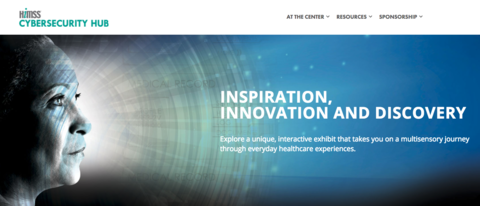November 2017 Archives
Nov 9, 2017
Health IT solutions are developing at an increasingly rapid pace. New applications and systems have helped streamline many administrative processes, particularly as they relate to revenue cycle management (RCM). With the latest technology, hospitals can more easily and efficiently capture charges and coordinate care, and often the challenge is implementing those systems and processes in the first place. The logistical hurdles of rolling out new solutions are multiplied when implementation has to occur across large healthcare networks that consist of dozens of practices. In such cases, each individual hospital could potentially be using different systems and processes to capture charges, which makes it difficult to get everyone on the same page and ensure a smooth transition.
Selecting the right health IT solution is a critical step to optimizing workflows and RCM, and the challenges don't end after go-live. The key is to leverage a dedicated implementation team that can analyze how different levels of an organization use software solutions and provide recommendations that will ensure increased adoption rates, timely billing and a reduction in missed charges.
Here is a rundown of a few key areas that large health systems and their implementation teams should be prepared to address as they consider rolling out a new RCM solution.
Pre-Implementation Planning
Many software implementations experience low adoption rates - or even outright fail - due to a lack of sufficient resources dedicated to change management, which encompasses everything from developing an implementation strategy to educating key stakeholders within the organization. This is especially critical for larger enterprises coordinating a rollout across several practices, where implementation strategies will have to be adjusted to account for varying workflows and reporting structures. [...]
Workflow And Revenue Cycle Data Analytics
Once the new RCM system is up and running, it's critical to keep a close eye on performance metrics so health systems can identify how many practices are adopting the new technology and, more importantly, understand whether the practices that have adopted the system are correctly using it. Some health systems may view a high adoption rate as the ultimate measure of success, but a truly successful implementation will see the new solution having a tangible, beneficial impact on hospital workflows with corresponding improvement across key performance indicators (KPIs) such as charge lag, claims denials and average reimbursement rates. [...]
Post Go-Live Optimization And Training
With the analytics supplied by the new RCM solution in hand, the implementation team can identify shortcomings in workflows and revenue cycles. In some cases, these shortcomings are a result of clinicians and administrators incorrectly using the new application. They simply need to be taught the best ways to use the new solution to facilitate improvement in those problem areas. Each department within a hospital will use the RCM solution in a different way, so it's essential to tailor education for each team so they understand the optimal way to utilize a new system after it goes live. [...]
The problem for many health systems is that IT solutions are under-utilized after rollout due to restraints on time and other resources necessary to ensure successful implementations. No matter whether a health system builds its own implementation team internally or taps the expertise of a vendor, it's critical to ensure the pieces are in place to proactively address pain points in revenue cycle management.
Source: Health IT Outcomes (View full article)
Dan Corcoran | Permalink | Comments (0)
Nov 8, 2017

Healthcare providers agree delivering a better patient experience is important to remaining competitive in the marketplace. A recent study revealed 85 percent of healthcare systems believe "patient experience" is one of the top three priorities for their organizations, with 64 percent of healthcare organizations reporting they've seen an increase in patient acquisition since starting patient experience initiatives.
However, in order to effectively improve the patient experience, healthcare organizations need to identify, analyze, and act on the issues affecting the multiple touchpoints of the patient experience. Below are three techniques which, with the right technology, can leverage patient feedback to engage and acquire more patients in the new consumer-driven healthcare market.
- Treat Online Reviews Like They Were Feedback Given At The Point Of Care
- Analyze Patient Feedback To Uncover Opportunities For Operational Improvements
- Use Patient Feedback Data To Increase Physician And Staff Engagement
As online rating and review sites continue to play a more influential role in healthcare decisions, there will be a greater level of expectation for healthcare providers to respond to patients' comments and reviews in an appropriate manner. Proper control and management of online reviews will further enhance consumer engagement and strengthen a healthcare provider's position in the market. With the right tools and strategies in place, healthcare organizations can dig deeper into the practices that are consistently ranking high on patient experience scores, and standardize best practices across an entire system. The time is now for healthcare providers to take full control of their online reputation to become an industry leader in building loyalty and driving new patient acquisition.
Source: Health IT Outcomes (View full article)
Dan Corcoran | Permalink | Comments (0)
Nov 8, 2017

The cybernetic revolution is happening, and it's imperative that civil liberties and privacy issues are addressed by system designers, innovators, regulators, and legislators, says James Scott, a Senior Fellow at cybersecurity think tank ICIT (Institute for Critical Infrastructure Technology).
With a recently released paper on the topic of implantable devices, he provided a comprehensive overview of the current situation regarding the use of medical and non-medical implants, and the security and privacy issues that already arose from their use, and are likely to arise in the future.
He expects sophisticated cybernetic implant systems to be more widely deployed in the next decade, and would like to see security-by-design be prioritized while implant devices are still in the inceptive phase. If we fail to do that, he says, there may not be any way to mitigate the onslaught of privacy and security harms poised to disrupt humanity's potential evolution.
What we need is "responsible regulatory legislation that does not pander to the whims of metadata curators and data brokers and that mandates security-by-design."
[...]
Source: Help Net Security (View full article)
Dan Corcoran | Permalink | Comments (0)
Nov 8, 2017
Diabetes is one of the most pervasive and expensive chronic diseases: It affects an estimated 30.3 million people in the United States and costs a staggering $245 billion per year to treat. In addition there are 84.1 million adults in the United States with high blood sugar levels in danger of developing type 2 diabetes. It is widely acknowledged that the most effective method of treating these prediabetics so they don't become full-fledged diabetics is diabetes prevention programs (DPPs) that follow a protocol validated by the Centers for Disease Control and Prevention (CDC). But the challenge has been to get people to enroll in them in the first place and stick with them if they do.
Omada Health, a digital therapeutics firm focused on preventing obesity-related chronic conditions such as type 2 diabetes, has made significant strides in achieving both with the 120,000 prediabetics who have participated in its program. Its success demonstrates the potential of digital health services, and its approach can serve as a model for applying such services to other chronic diseases. We studied Omada's program as part of our Harvard Medical School initiative to identify and share knowledge about innovative approaches to major health challenges that primary care providers play the lead in treating.
DPPs typically include in-person meetings of a small group of prediabetic adults who, with the guidance of a health coach, progress through a diet and lifestyle curriculum. The course usually consists of weekly sessions during the initial four months. Participants then receive monthly support via check-ins with health coaches for an additional eight months. A number of organizations -- including the YMCA, the American Association of Diabetes Educators, and the Diabetes Prevention and Control Alliance -- provide in-person DPPs at various locations.
[...]
Going forward, federal payment and reform initiatives to encourage screening to identify prediabetics will make it easier for health care providers to refer prediabetic patients to programs such as Omada's. Its DPP provides a model of how digital health interventions can be used to address other conditions in ways that reduce costs, improve patient involvement in their own care, and mitigate the overwhelming burden of chronic diseases in the United States.
Source: Harvard Business Review (View full article)
Dan Corcoran | Permalink | Comments (0)
Nov 8, 2017
Now that clinical settings are generating so much data, machine learning is starting to be deployed to fine-tune predictive analytics involving an increasing number of care settings and conditions. For instance, researchers are using machine learning to build and evaluate prediction models to identify which patients might be at increased risk of suicide and when that risk is reduced or elevated.
Suicide remains the 10th-ranked cause of death in the United States, accounting for 41,000 deaths in 2013. Suicide attempts lead to 600,000 emergency department visits and 200,000 hospitalizations annually in the United States.
In an Oct. 27 presentation to the NIH Collaboratory, Gregory Simon, M.D., M.P.H., a psychiatrist and senior investigator at the Kaiser Permanente Washington Health Research Institute, described efforts to use population-based data from large health systems to develop evidence-based suicide attempt risk calculators for mental health and primary care clinicians.
Simon began by explaining that many provider organizations, including Kaiser, have already developed standard workflows for creating personal safety plans for patients who had a high score in response to a questionnaire about self-harm (called an Item 9 screening). He noted that Kaiser providers were held accountable and had salary dependent on following systematic care processes for patients with suicidal ideation.
[...]
If it is true that the machine-learning algorithm offers an improvement in terms of predictive value, what does that mean for clinical practice?
"We would hope to use these to develop new standard work flows," Simon said. It could also trigger new standard workflow outside of or between visits. If someone fails to attend a visit or cancels a visit, this could give an opportunity to do more aggressive outreach, he said.
In the next few months, Kaiser Permanente in Washington, D.C., is planning to upload the results of the risk scores generated by the algorithm into its EHR at the point of care, Simon said.
Following Simon's presentation, Don Mordecai, M.D., Kaiser Permanente National Leader for Mental Health and Wellness, said, "the idea that machine learning is about to be launched in our healthcare system is tremendously exciting. It could really turn the system on its head. Ever since healthcare was something humans did, the patient has had to hold up his hand and the system would respond. The idea here is that if you have rich enough data you can instead predict who may need help and do outreach and move care upstream. That is a goal for healthcare in general, whether it is dealing with cancer or a person heading toward self-harm. I am excited and thrilled to see how clinicians will use it."
Source: Healthcare Informatics (View full article)
Dan Corcoran | Permalink | Comments (0)
Nov 8, 2017
Most hospitals are not sharing electronic patient data--and those that are primarily send and receive flat files that are difficult to integrate into clinicians' work flow processes, according to a new study published in Health Affairs.
Researchers used data from a national hospital survey done by the American Hospital Association in 2014 and 2015. They used responses to survey questions to assess hospital engagement in the Office of the National Coordinator for Health Information Technology's four domains of interoperability:
- Finding data
- Sending data
- Receiving data
- Integrating data into their electronic health record without manual intervention.
"We assessed progress in each of the four domains and among hospitals engaging in all four, as well as evaluating what types of hospitals are becoming newly interoperable," says study lead author A Jay Holmgren, a doctoral student in health policy and management at Harvard Business School. "Finally, we evaluated the association between each of those domains and hospital availability and use of outside patient data for delivering care."
Source: Managed Healthcare Executive (View full article)
Dan Corcoran | Permalink | Comments (0)
Nov 8, 2017

In an effort to offset rising healthcare costs, and subsequently, rising premiums, many employers shifted to High Deductible Health Plans (HDHPs), which now account for 81 percent of covered workers insurance plans.1 Not to mention, deductibles have quadrupled since 2003, and the average deductible for single coverage now surpasses the $2000 mark for most Americans at $2120.2
Hospitals do have options to help mitigate and control this disturbing trend. Below are three ways providers can help reduce uncompensated care: create patient financial risk profiles, combat fraud and create more effective back-end collection strategies.
Create patient financial risk profiles
Predictive analytics at pre-registration can create a comprehensive view of the patient's financial situation. For instance, such analysis draws on multiple external and third-party datasets, which can help hospitals mitigate patient financial risk and find the best financial assistance program for patients.
Combat Fraud
As health care became expensive, fraud and medical theft issues have grown significantly, as the stakes are higher. In fact, fraud costs the health care industry tens of billions of dollars a year, according to the FBI, so combating fraud is another opportunity hospitals can use to help stem their losses. Predictive analysis can also trigger fraud alerts when, for example a patient presents a Social Security number that has been linked to a death certificate. It can also detect red flag alerts and help with compliance audits, enabling medical theft to be identified earlier in the process.
Create More Effective Back-End Collection Strategies
Predictive analysis and automation help make back-end processes more efficient. In particular, automated claims work queue management quickly determines which claims were accepted, denied or are in process.
[...]
As these examples show, hospitals can help improve their collection methods with data-driven strategies. Such strategies can increase efficiencies, and take a proactive approach to fraud and insights to likelihood of payment. Providers can benefit through worker smarter, not harder, and leveraging powerful data insights to protect revenue form leakage and optimize collections. Harnessing the third party data affords the staff the necessary expertise in this patient as payer environment.
Source: Becker's Hospital Review (View full article)
Dan Corcoran | Permalink | Comments (0)
Nov 8, 2017
Health IT Now, a coalition of patient groups, provider organizations, employers, and payers supporting health IT, penned letters to lawmakers in the House and Senate urging they keep telehealth a focus in year-end Medicare legislation.
In his letter to Senate leaders Mitch McConnell, R-Ky., and Chuck Schumer, D-N.Y., Health IT Now Executive Director Joel White advocates the Senate include provisions of the Creating High-Quality Results and Outcomes Necessary to Improve Chronic Care Act of 2017.
In a separate letter to House leaders Paul Ryan, R-Wis., and Nancy Pelosi, D- Calif., Mr. White writes representatives should value telehealth policies in the Increasing Telehealth Access in Medicare Act, as well as the Furthering Access to Stroke Telemedicine Act of 2017 and the unnamed bill proposing increased access to home dialysis, H.R. 3164.
These provisions would allow Medicare Advantage plans to offer telehealth services or improve access to home dialysis therapy.
"Medicare lags behind the majority of other health payers - including Medicaid, the private sector, the Department of Veterans Affairs, and the Federal Employees Health Benefits Program - in covering and reimbursing for telehealth enabled services," both letters read. "Including these provisions in year-end Medicare legislation will allow healthcare providers to more effectively deliver care when and where patients need it."
Source: Becker's Hospital Review (View full article)
Dan Corcoran | Permalink | Comments (0)
Nov 7, 2017

When the Educational Service Center of Cuyahoga County in Ohio was looking for a way to enhance healthcare for its faculty and staff and trim costs, it initiated an employer telehealth program in July 2017. And while hospital IT shops might not typically look to education departments to learn about the Triple Aim, there are lessons that private and public health entities can learn from.
In the first 90 days, for instance, were 45 telemedicine consultations happened. The average savings by using the telemedicine option was $342 each visit, and the median wait time until speaking with a doctor was 2 minutes and 23 seconds, said Russ Bennett, director of leadership services at Educational Service Center of Cuyahoga County.
[...]
All told, the Educational Service Center of Cuyahoga County has earned a 130 percent return on investment totaling some $48,000 in the first 90 days and that's despite the fact that many employees are off for the summer and don't come back into work until mid-August.
Employer-based telemedicine is growing outside of Cuyahoga County as well. An August 2017 survey from the National Business Group on Health, in fact, found that telehealth offerings by employers are becoming nearly universal.
Next year, 96 percent of employers plan to offer telemedicine services to employees, up from 90 percent this year. NBGH polled 148 large employers for the survey.
NBGH has been doing this study for four years now, and the progression has been steep, with employers reporting just 48 percent adoption in 2014.
Source: Healthcare IT News (View full article)
Dan Corcoran | Permalink | Comments (0)
Nov 7, 2017

The HIMSS Cybersecurity Hub, a new flagship component of the HIMSS Innovation Center, is a public exhibit and education center to help people fully understand their roles, responsibilities and vulnerabilities when it comes to managing and protecting their health information - both personally and professionally. Explore a unique, interactive exhibit that takes you on a multisensory journey through everyday healthcare experiences. Dive into the latest security issues and available solutions, and learn how to apply a variety of technologies to impact the safe and secure flow of health information.
Source: HIMSS (Visit Hub Website)
Dan Corcoran | Permalink | Comments (0)






